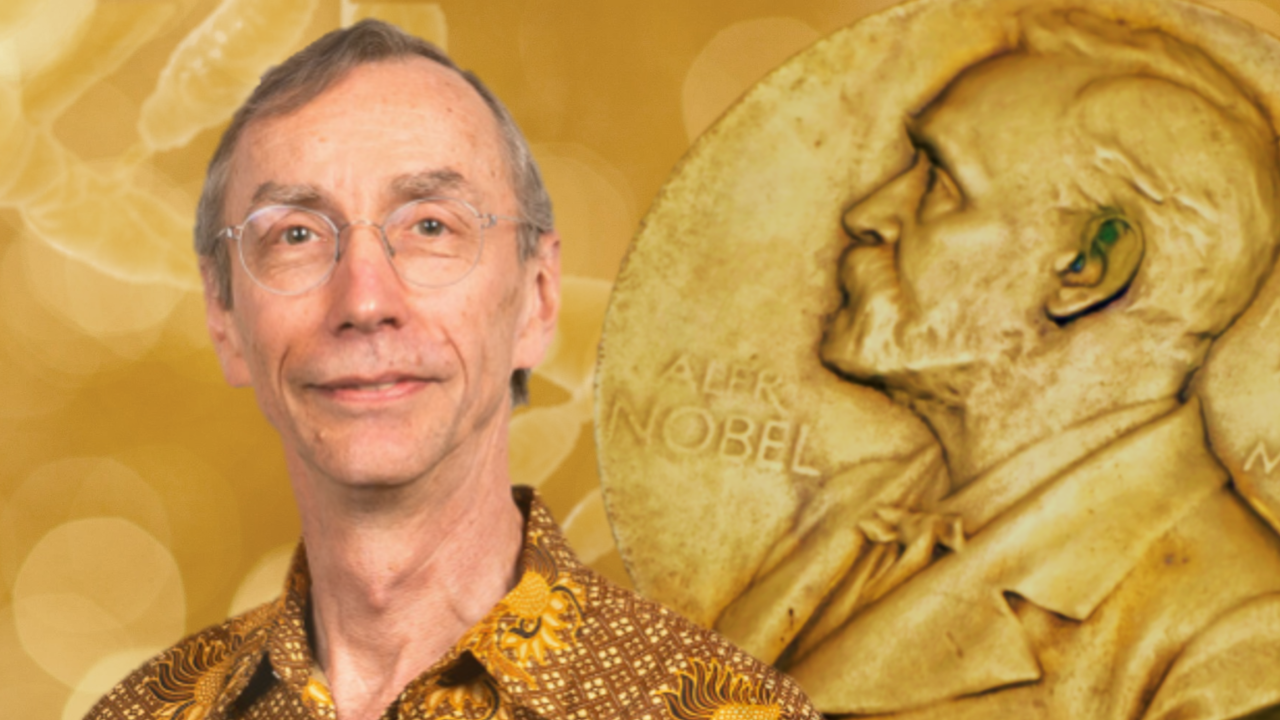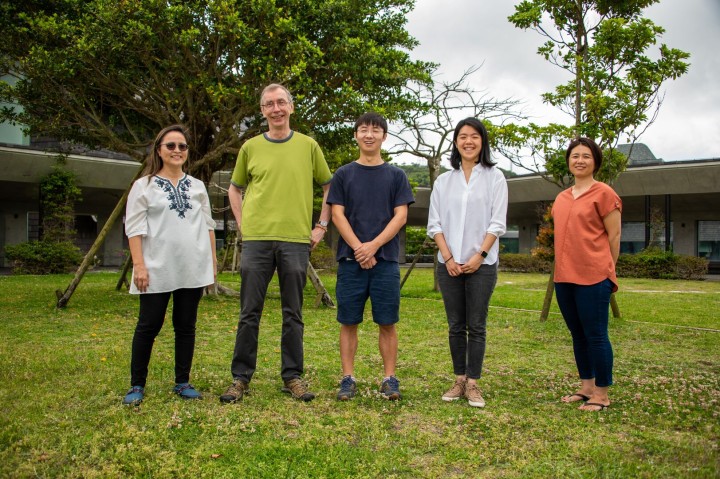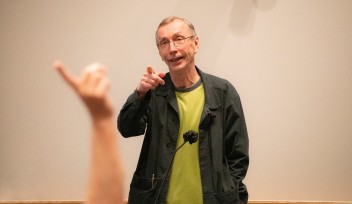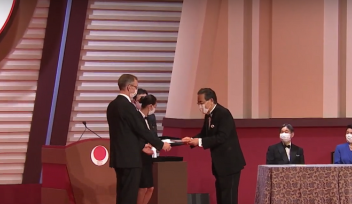Beyond the Nobel Prize: Professor Pääbo’s quest to uncover what makes humans unique

300,000 years ago, around the time when modern humans first evolved in Africa, at least eight other species of human also inhabited the Earth. Neanderthals walked throughout the grassy plains of Europe, while Denisovans ranged across Asia. But by around 40,000 years ago, as modern humans migrated to far-flung regions of the world, these species disappeared, leaving Homo sapiens as the sole survivors of the Homo genus.
But why did we succeed where others failed? What were the factors that made us unique? Did our genetics play a role?
These are some of the questions that have fascinated Professor Svante Pääbo, whose research into ancient human genomes cinched him this year’s Nobel Prize in Physiology or Medicine.
Over the course of his career, Prof. Pääbo has pioneered methods in extracting and sequencing DNA from ancient bones, resulting in several key discoveries that have rewritten what we know about human evolution. His successful decoding of the Neanderthal genome led to the finding that modern humans still contain traces of Neanderthal DNA – unmistakable evidence that Homo sapiens and Neanderthals co-existed and interbred tens of thousands of years ago. And DNA taken from an ancient fingerbone in a Siberian cave has resulted in the identification of an entirely new species of extinct human, the Denisovans.
While some researchers are now working on perfecting the techniques of sequencing ancient DNA, Prof. Pääbo has started comparing modern and extinct human DNA to identify variants of genes that are found only within modern humans. His goal is to see if these differences have resulted in functional changes, or in other words, if genetic variants that are unique to modern humans have been consequential in our evolution.
“I’m interested in the question of what makes modern humans special and what drives our behavior,” said Prof. Pääbo.
A tale of mice and men
Since joining OIST in May 2020 as an Adjunct Professor leading the Human Evolutionary Genomics Unit, Prof. Pääbo and his team of researchers have created genetically modified mice that contain either modern human or ancient Neanderthal genetic variants.

“If we compare these “humanized” mice to normal mice, we can see if the genetic variants unique to modern humans affect their behavior, or how their brains and muscles develop,” explained Dr. Xiang-Chun Ju, a postdoctoral researcher in Prof. Pääbo’s unit.
One gene that has a unique version in modern humans is ADSL, a gene that is associated with aggressive behavior.
In the lab, the team have set up an IntelliCage, which can automatically track the activity of the mice to see if the “humanized” mice display more or less dominant behavior compared to the normal mice.
"So far, we are seeing early results that suggest that mice with the human version of ADSL are more dominant,” said Dr. Ju. “But since the genetic variants are so similar – the encoded protein differs by only one amino acid – the resulting changes in behavior are very subtle. We need many more data points before we can draw any definite conclusions.”
Dr. Shin Yu Lee, who is also a postdoctoral researcher in Prof. Pääbo’s unit, has also been exploring the function of ADSL, along with another enzyme called AMPD1. Both these enzymes are involved in purine metabolism, which is crucial for the development and function of skeletal muscles.
“One of the well-known features of Neanderthals is that they are much more muscular than modern humans, and many gene variants related to sports performance are found to be more common in Neanderthals,” said Dr. Lee. “I aim is to uncover how variants of these genes make us different from Neanderthals and what implications this could have had in human evolution.”
So far, Dr. Lee is conducting experiments that explore how mice with the modern human variant of ADSL or the Neanderthal variant of AMPD1 respond to physical exertion. She is also looking at genetically modified human stem cell lines, which have been edited with Neanderthal variants, to see what changes occurs as they develop into skeletal muscle cells.
Building new bridges
Over the past two years, Prof. Pääbo has also begun collaborations with other OIST research units, including Professor Bernd Kuhn’s Optical Neuroimaging Unit.
“In my lab, we study and image the activity of neurons in the brain, and how it influences behavior. One of the areas we focus on is tongue movement, which requires complex motor coordination,” said Prof. Kuhn. “At the same time, tongue movement is essential for the development of speech and language, which was an essential step for human evolution. So this was a natural area of overlap between mine and Svante’s research.”
Their project uses mice that have been genetically modified with the human version of FOXP2, a gene that is crucial for understanding language and producing speech. Using a setup pioneered in Prof. Kuhn’s lab, the mice are tasked with grabbing food pellets with their tongue. At the same time, the scientists are able to image neuron activity.
“The idea is to see which mice can use their tongue better, the normal mice or the ones with human FOXP2. We’re analyzing the results now, which is very exciting.”
A second collaboration with the Sensory and Behavioural Neuroscience Unit, led by Professor Izumi Fukunaga, is also ongoing. Prof. Izumi’s lab looks at how the brain deals with chemical information in the environment in a flexible way.
“Animals need to be adaptable, and able to respond differently to chemical cues depending on their needs or their surroundings,” explained Prof. Fukunaga. “This is a powerful and sophisticated brain mechanism that is thought to occur in the parts of the brain which are particularly well-developed in humans.”
By using mice that carry human genetic variants, Prof. Fukunaga hopes to gain insight into how specific genes contribute to this behavior. In their study, the mice are presented with two different scents, with a small time gap in between, and are taught to report whether the scents were the same or different.
“It’s a complex task for mice as they have to identify and remember the smells,” said Prof. Fukunaga. “We want to see if mice with the human genes can accomplish this task more accurately, and whether they can remember the smells for longer.”
Their current study is also looking at the FOXP2 gene, but in the future, Prof. Fukunaga plans to explore the effect of other genetic variants that may hold the key to what makes humans unique.
The 2022 Nobel Prize ceremony will begin at 16:00 CET on Saturday 9th December (00:00 JST Sunday 10th December). You can watch here.
Research Unit
For press enquiries:
Press Inquiry Form














